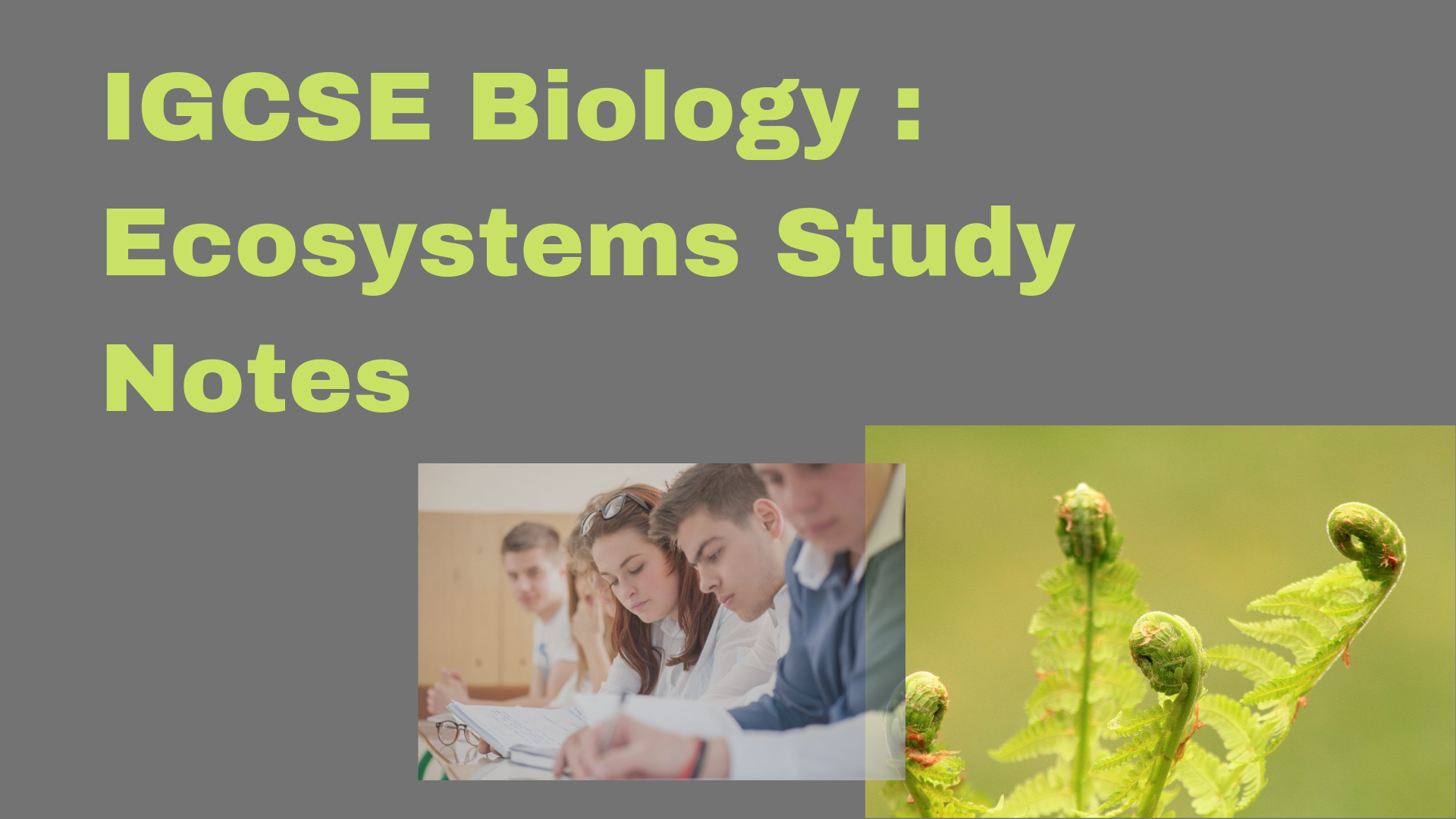
The Sun is the principal source of energy input to biological systems.
The Earth receives 2 main types of energy from the Sun: light (solar) and heat.
Photosynthetic plants and some bacteria can trap light energy and convert it into chemical energy.
Non-cyclical nature of energy flow
Heterotrophic organisms obtain their energy by eating plants or animals that have eaten plants.
So all organisms, directly or indirectly, get their energy from the Sun.
The energy is passed from one organism to another in a food chain but, unlike water and elements such as carbon and nitrogen, energy does not return in a cycle.
Energy give out by organisms is lost to the environment.

Energy is lost at each level in the food chain, as in the examples below.
- Energy lost through the process of respiration (as heat)
- Energy used up for movement (to search for food, find a mate, escape from predators…).
- Warm-blood animals (birds and mammals) maintain a standard blood temperature – they lose heat to the environment.
- Warm-blood animals lose heat energy in faeces and urine.
- Some of the material in the organism being eaten is not used by the consumer, for example a locust does not eat the roots of maize, and some of the parts eaten are not digestible.
Even plants do not make use of all the light energy available to them.
This is because some light:
- is reflected off shiny leaves
- is the wrong wavelength for chlorophyll to trap
- passes through the leaves without passing through any chloroplasts
- does not fall on the leaves.
On average, about 90% of the energy is lost at each level in a food chain. This means that in long food chains, very little of the energy entering the chain through the producer is available to the top carnivore.
So there tend to be small numbers of top carnivores. The food chain below shows how energy reduces through the chain. It is based on maize obtaining 100 units of energy.
maize – locust – lizard – snake : 100 units – 10 units – 1 unit – 0.1 unit
On shorter food chains, less energy is lost.

1. a) Which form of the Sun’s energy is trapped by the producer?
b) Into which energy form is the Sun’s energy converted when it is trapped by the producer?
2. a)The first consumer has received 6000 units of energy. How many units of energy (X on the figure) have been passed to the second consumer?
b) How many units of energy (Y on the figure) are lost from the third consumer to the decomposers.
3. a) Suggest why the proportion of the energy intake which a producer loses to the environment (20%) is smaller than that lost to the environment by a first consumer (30%).
b) Many countries have difficulty in producing enough food for their population. How might it help to overcome this problem if humans were always fed as first consumers, rather than second or third consumers?
Answer
1. a) Light (or solar) energy
b) Chemical energy
2. a) 1200 units
b) 48 units
3. a) The consumer may be warm-blooded, so some energy is lost as heat. Consumers usually move around to find food, a mate, or escape from predators, which uses up energy, but producers do not move.
b) Feeding as a first consumer involves eating plants. Less energy is lost to the environment when feeding at this level, so food production is more efficient in terms of energy conservation.
Food chain

Food chain is a chart showing the flow of energy (food) from one organism to the next beginning with a producer.
Examples:
mahogany tree – caterpillar – song bird – hawk – maize – locust – lizard – snake
- A food chain usually starts with a photosynthetic plant, which gains its energy from the Sun.
- The arrows used to link each organism to the next represent the direction of energy flow. They always points towards the ‘eater’, and away from the plant.
- The feeding level is known as the trophic level.
- Plant are producers (they make/produce food for other organisms).
- Animals that eat plants are primary consumers (a consumer is an ‘eater’). They are also called carnivores.

Examiner’s tips
- Make sure you can write a food chain involving 3 consumers, with the arrows in the correct direction.
- Don’t include the Sun (it is not an organism).
- Always start with the producer on the left of diagram.
- Practice labeling each trophic level in your food chain under the organisms (producer, primary consumer, etc.).
- Don’t waste time drawing plants and animals: this will not get you any extra marks.
Common misconceptions
Marks are often lost when students write out food chains and webs because they draw the arrows the wrong way round or put the chain back-to-front (or both).
The following example was seen in a recent paper:
jackal – sheep – grass
This student is suggesting that grass eats sheep and sheep eat jackals!
Are you interested in learning IGCSE Biology? In a matter of seconds, create an account with Tutopiya.com for a 60 minute free trial to see whether our Online Whiteboard classroom is the right decision for your child

